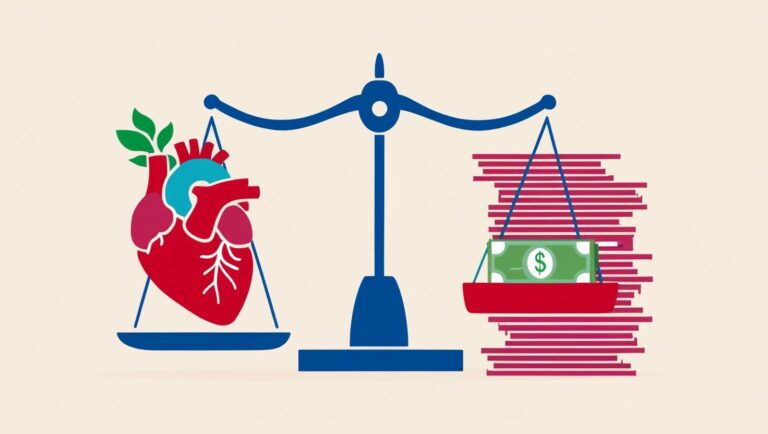Understanding the criteria and conditions that qualify for long-term disability (LTD) insurance benefits is crucial for both employees and employers. As of 2024, the landscape of long-term disability insurance has evolved, reflecting changes in medical understanding, workplace dynamics, and legal frameworks.
This comprehensive guide delves into the intricacies of what medical conditions typically qualify for long-term disability, offering insights into the process, challenges, and considerations involved.
Table of Contents
Definition of Long-Term Disability
Long-term disability insurance is a protection mechanism designed to provide financial assistance to individuals who are unable to work for an extended period due to a medical condition, Disability.ca can help with these insurances.
Unlike short-term disability insurance, which covers temporary inability to work, long-term disability insurance kicks in after the short-term benefits expire, offering coverage that can last from several years to the remainder of an individual’s life, depending on the policy specifics.
Qualifying for Long-Term Disability
Qualification for long-term disability benefits hinges on the policy’s definition of disability, which generally revolves around the insured’s inability to perform their own occupation or any occupation, depending on the policy terms.
The process involves submitting medical evidence that supports the claim, including diagnoses, treatment plans, and prognoses, alongside documentation of the claimant’s work history and job duties.
6 Common Medical Conditions That Qualify

The range of medical conditions that can qualify an individual for long-term disability benefits is broad, encompassing both physical and mental health issues. The following sections discuss various conditions that are commonly recognized by long-term disability insurers.
1. Musculoskeletal Disorders
Musculoskeletal disorders, including conditions affecting the back, neck, joints, and bones, are among the leading causes of long-term disability. Chronic back pain, arthritis, and degenerative disc disease significantly impair an individual’s ability to perform work, especially in physically demanding roles.
These conditions are often characterized by persistent pain, limited mobility, and the need for prolonged treatment and rehabilitation.
2. Mental Health Conditions
Mental health conditions represent a significant portion of long-term disability claims. Depression, anxiety, bipolar disorder, and schizophrenia can severely impact an individual’s ability to maintain employment, requiring comprehensive and ongoing treatment. The subjective nature of these conditions poses challenges in the claims process, necessitating detailed medical documentation.
3. Neurological Disorders
Neurological disorders, such as multiple sclerosis, Parkinson’s disease, epilepsy, and traumatic brain injuries, can lead to significant functional impairments. These conditions often result in cognitive and physical limitations, making it difficult for affected individuals to engage in their usual occupational activities.
4. Cardiovascular Conditions
Heart disease and stroke are critical health issues that can lead to long-term disability. The aftereffects of such conditions, including reduced physical capacity, chronic fatigue, and the need for ongoing medical care, can prevent individuals from returning to work.
5. Cancer
Cancer and its treatments can have debilitating effects, necessitating extended periods away from work. The severity and type of cancer, the stage at which it is diagnosed, and the treatment protocol influence the extent to which cancer qualifies for long-term disability benefits.
Recovery from cancer often involves long-term management and monitoring, impacting an individual’s capacity to work.
6. Chronic Illnesses
Chronic illnesses such as diabetes, chronic kidney disease, and autoimmune diseases like lupus and rheumatoid arthritis can qualify for long-term disability benefits. The persistent and often progressive nature of these conditions can lead to significant lifestyle changes and work limitations.
Challenges in Qualifying for Benefits

Despite the clear impact of these conditions on an individual’s ability to work, qualifying for long-term disability benefits can be challenging. Insurers require substantial medical evidence, and the subjective nature of some conditions, such as mental health issues and chronic pain, complicates the validation process.
Policyholders must navigate strict policy definitions, varying waiting periods, and sometimes exhaustive appeals processes.
Legal and Policy Considerations
The legal landscape surrounding long-term disability insurance is complex, influenced by federal and state laws, as well as the specifics of the insurance policy. Understanding the policy’s definition of disability, the required evidence, and the claims process is essential.
Additionally, legislation such as the Americans with Disabilities Act (ADA) and the Employee Retirement Income Security Act (ERISA) provide frameworks that influence long-term disability policies and protections.
Future of Long-Term Disability
The future of long-term disability insurance is likely to be shaped by advancements in medical technology, changes in the nature of work, and evolving legal standards. Increased recognition of mental health conditions and the growing prevalence of chronic diseases may influence policy terms and claims processes.
Furthermore, telemedicine and digital health records could streamline the documentation and verification processes for disability claims.
FAQs

How does the “own occupation” vs. “any occupation” definition affect my long-term disability claim?
The distinction between “own occupation” and “any occupation” in long-term disability policies fundamentally affects claim eligibility. “Own occupation” policies provide benefits if you are unable to perform the duties of your specific profession due to a medical condition.
In contrast, “any occupation” policies require that you be unable to perform the duties of any job for which you are qualified by education, experience, and training. This means it’s generally easier to qualify for benefits under an “own occupation” policy.
Can a pre-existing condition exclude me from obtaining long-term disability benefits?
Many long-term disability policies include pre-existing condition exclusions. If your disability results from a condition you had before your coverage began, you may not be eligible for benefits if the condition manifested within a certain period, typically 12 to 24 months, after your policy started.
However, if your condition worsened significantly after the policy took effect, or if you were symptom-free during the exclusion period, you might still qualify for benefits.
What is the typical waiting period before long-term disability benefits begin?
The waiting period, also known as the elimination period, is the time between the onset of your disability and when you start receiving benefits. This period typically ranges from 90 to 180 days. The specific duration depends on your policy terms. During this time, you may be eligible for short-term disability benefits, if available.

Final Words
Qualifying for long-term disability benefits requires navigating a complex interplay of medical conditions, insurance policy terms, and legal frameworks. Individuals facing disabling conditions must arm themselves with comprehensive medical documentation and an understanding of their policy’s specifics.
As medical science advances and societal attitudes toward disability evolve, the landscape of long-term disability insurance will continue to change, reflecting broader trends in healthcare, employment, and social policy.
Awareness and preparedness are key to successfully navigating the long-term disability claims process, ensuring that those affected by qualifying conditions receive the support they need.
Related Posts:
- Cybersecurity Trends in Medical Data Protection
- Hottest Countries in the World 2024: Chasing Sunsets Guide
- How to Work With Your Kids School to Curb Bad Habits…
- How Do Temperature Humidity Chambers Work? 2024 Guide
- How Much Does A Tiny Home Cost In 2024? Price Guide
- Essential NYC Move Guide: 10 Things to Know Before…













